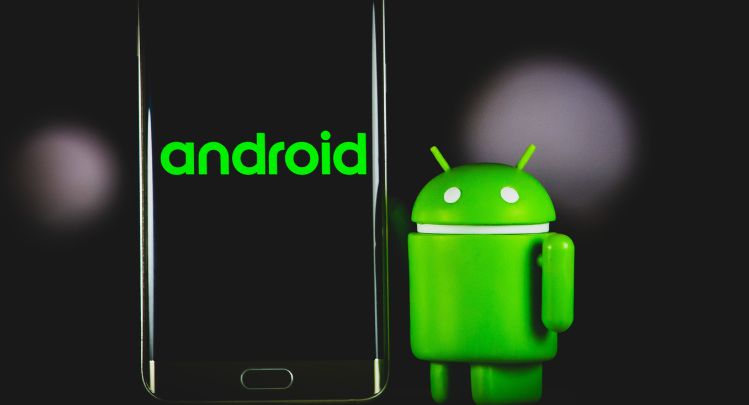Top 10 Android Libraries for App Development in 2024
Android is the leading mobile operating system that faces the highest surge of app projects across niches. According to Statista, the number of Android apps in the Google Play Store is 3,507,688 and still counting.
With the surging demand, faster development with no compromise on quality has become a key criterion. This is where the role of some Android development libraries is important.
There are too many great Android libraries to help you build an Android app with maximum ease, from design, development, and testing to deployment. Some key reasons developers use these third-party libraries include faster design and development, streamlining development tasks, flexible and visual user interface design, and cross-platform compatibility. Code optimization, easily accessible development tools, and many similar benefits. There are several expert Android app developers in India for hire that can customize the app and optimize code using Android libraries.
But it would help if you were versed in some of the most notable choices. Below, we would like to take a closer look at the top Android development libraries.

Android Jetpack
Android Jetpack library is one of the leading libraries used by Android developers worldwide. It offers a rich repository of utilities, ensuring consistent and reliable app performance. Created and maintained by Google, Jetpack happens to be the dominant choice for all regular tooling requirements of developers.
Some of the key features and capabilities of Android Jetpack include the following:
- Thanks to Jetpack one can easily avoid the majority of boilerplate code that always remains the same across multiple devices.
- The toolset also prevents memory leaks due to faulty components.
- Jetpack offers the android package libraries, which remain unchanged by the platform-specific APIs ensuring optimum backward compatibility.
- Android Jetpack offers full support for the key Android programming languages such as Java and Kotlin and ensures faster development and release cycle.
- Android Jetpack comes with ready-to-use support libraries and UI components following material design conventions and styles.
- Jetpack also offers useful components like LiveData and ViewModel for app projects.
- Jetpack offers several navigation patterns as well. (Navigation as a Service).
- Jetpack allows writing and running code simultaneously on Java and Kotlin runtimes, ensuring optimum productivity.
- You can use the library just by adding dependency with the respective module.
Picasso
High-quality Android apps these days rely hugely on the visual look and feel for a superior app user experience. This requires using quality images from different image libraries. For this, you can find Picasso's open-source image library to be tremendously effective.
Let us quickly look at the key features and capabilities of the Picasso image library for Android apps:
- It is a simple and easy-to-use library that allows loading images from remote URLs.
- Thanks to this library, Android developers do not need to code a lot to access and incorporate images from servers. Picasso, for the same purpose, just requires writing a few code lines.
- Picasso requires very low storage capacity, and on top of that, it offers auto-storage and caching features.
- Picasso helps detect the reuse of images and can remove old image files instantly.
- On the other hand, this library also helps convert images to other formats and reduce the file size of the images.
React Native
React Native is a JavaScript-based library that is widely popular for developing native mobile apps by using tried and trusted web development languages such as javascript, CSS, and React. React Native, as a library developed by Facebook, is free with open-source licensing for the developers.
Thanks to React Native, it becomes significantly easier to develop cross-platform apps with the scope of sharing maximum code while ensuring a native user interface and user experience. Because of maximum code reusability and component-based architecture, React Native also helps bring down the app development cost greatly. Know more about the estimated How much does it cost to develop and maintain a mobile app in India. React Native can also access various native frameworks and libraries for respective platforms.
Some of the key features and capabilities of React Native include the following:
- React Native comprises many native components for developing apps with a native look, feel, and user experience.
- When using React Native, app developers need to code a little as they find a lot of ready-to-use UI components.
- App developers can reuse the same codebase across iOS, Android, and the web.
- The React Native code can be easily compiled with the code of the native apps for every OS platform.
- The hot reload feature allows developers to evaluate the code changes in running the app without reloading the app again and again.
- There are several open-source packages to help you equip your existing React Native app with more features and capabilities.
Corona SDK
Corona SDK was launched in 2009 as a highly equipped 2D game development library for iOS and Android mobile platforms. Because of simple syntax, this library makes the job of app developers easier. Most importantly, it comes as a free and open-source technology. Easy deployment across multiple platforms is another major strength of Corona SDK.
Some of the key features and capabilities of Corona SDK are the following:
- Corona SDK is widely known for its simplicity and ease of use. It can speed up the development process and make it ten times faster than most other libraries and frameworks.
- Corona SDK is awesome in code reusability and allows reusing maximum code across platforms for app and game development projects.
- Developers can access corona SDK on both Windows and Mac operating systems for their development work.
- Corona SDK uses the LUA programming language, known for different paradigms. It is extremely lightweight, easy for developers, and comprehensive.
- Corona SDK also offers more than a thousand APIs out of the box for app projects.
- It also provides a multitude of plugins for incorporating many features and capabilities per the development needs.
- Corona SDK also offers inbuilt support for real-time testing.
Android Retrofit
Android Retrofit is one of the increasingly popular libraries that is used for dynamic Restful API user interfaces. This library is widely considered one of the HTTP clients with type-safe nature that fits into projects involving Java and Kotlin.
Some of the key features and capabilities offered by Android Retrofit include the following:
- Square creates Retrofit with a power-packed infrastructure allowing accessible communication and user authentication.
- The retrofit library also ensures extreme ease in detecting web API information presented through formats like JSON or XML.
- The latest version of the library called Retrofit 2 also provides several advanced new features and a state-of-the-art API for internal uses.
- To ensure smooth API communication, Retrofit uses a robust transport protocol called OkHttp.
- Faster performance and simple syntax made it popular among Android app developers.
Dagger2
Dagger2 is the latest version of the well-known Dagger library, and over the years, it has become a staple choice for Android app developers. Dagger2 stays ahead of other Android development libraries that deal with dependency injections. It is the most potent dependency injector library for Android app development projects.
Some of the key features and capabilities of Dagger2 are the following:
- This dependency injection library allows a single model to receive and combine multiple pieces from different models.
- It can handle very complicated requirements for large apps needing multiple dependency injections.
- Just because Dagger2 can produce powerful dependency graphs, it gives developers awesome controls and flexibility.
Lottie
Do you want a powerful parsing library for your Android app project? In that case, you cannot find a better one than Lottie. When it comes to parsing programming interfaces, Lottie tops the list.
Some of the key features and capabilities of Lottie are the following:
- It offers great help for smooth animation rendering thanks to the JSON-based output of Adobe After Effect collections.
- Moreover, it allows developers to recreate animation just by copying and pasting actions, and they do not need to create animations from scratch.
- The library also allows developers to go back and forth in their activities.
- The library also allows turning responses for user inputs into animated forms.
Appcelerator Titanium
Titanium is the most potent cross-platform development library allowing developers to build apps using JavaScript and deploy them across multiple OS platforms. The cross-platform development capability apart, Appcelerator Titanium is a perfect fit for Android app development projects. Appcelerator Titanium stands apart mainly because of its integrated IDE. The best benefit of this library is that you can develop awesome Android apps without depending on third-party tools and IDEs.
Some of the key features and capabilities of Appcelerator Titanium include the following:
- Appcelerator Titanium is entirely free and open-source as a library.
- Relying on JavaScript and trying and testing web development technologies brings the down the learning curve.
- Android native languages like Java can also call the JavaScript code used by the library and Kotlin.
- Appcelerator Titanium has already made an excellent reputation across many industries, including Fintech, banking, and healthcare, and it has been used in countless Android apps for years across the industries.
- For developing enterprise apps on Android and extending the same across other OS platforms, Appcelerator Titanium is regarded as the leading tool.
Summing It Up
As of now, we have described some of the most popular and widely-used Android development libraries that app projects across industries prefer to use. Of course, other credible libraries and frameworks equally deserve mention.
For example, we should have mentioned Flutter, the most popular cross-platform development framework, just because it is not a library. These libraries have been instrumental in shaping successful Android app projects for different industry niches.


Do you want to develop an app or website? Talk to Raza and get started!
Raza is a tech entrepreneur with an experience of working with 500+ clients. His key expertise is around tech consultation, where he guides people on how to successfully build digital softwares for their businesses.
TALK TO RAZA!